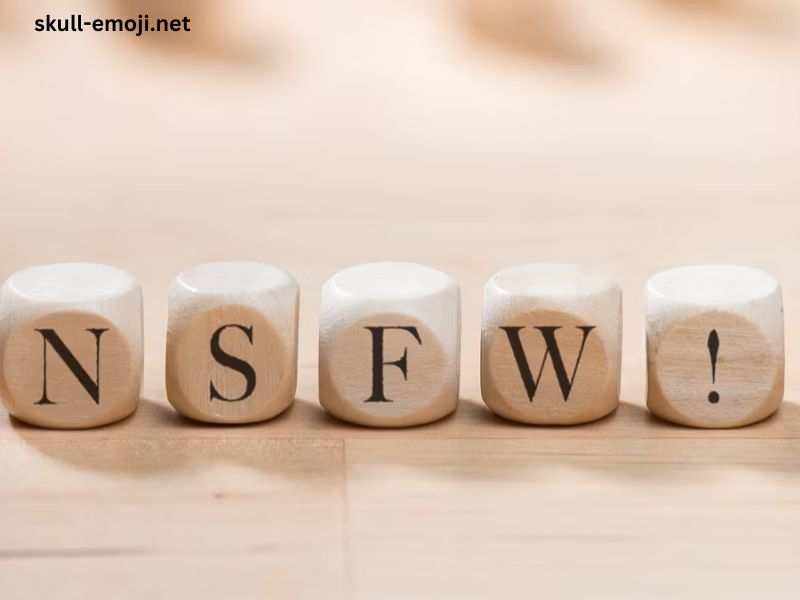In the age of the internet, acronyms and abbreviations have become commonplace, evolving alongside digital communication. One such acronym that often sparks curiosity is NSFW. But what does NSFW stand for, and why is it significant in our online interactions? This article will delve into the meaning of NSFW, its origins, implications, and how it shapes our online experiences.
The Meaning of NSFW
NSFW stands for “Not Safe for Work.” It is commonly used as a warning to indicate that the content in question may be inappropriate for a professional environment or workplace setting. This can encompass a wide range of materials, including explicit images, adult-themed videos, or even suggestive language that could be deemed unprofessional or offensive in a work context.
The use of NSFW serves as a safeguard, alerting individuals to the potential risks of viewing or sharing certain types of content in environments where such material could lead to discomfort or disciplinary action. The warning allows users to make informed decisions about whether to engage with specific content based on their current surroundings.
Origins of NSFW
The term NSFW emerged alongside the rise of internet culture in the late 1990s and early 2000s. As online communication grew, so did the need for concise ways to convey complex ideas. The increasing availability of adult content on the internet prompted users to develop shorthand to navigate these digital spaces.
Initially, NSFW was primarily used in forums and discussion boards, where users could share links to content that might not be suitable for all audiences. Over time, it spread to social media platforms, messaging apps, and various other online communication channels. The acronym gained traction as a cultural phenomenon, often employed in humorous or sarcastic contexts, highlighting the fine line between appropriateness and inappropriateness in digital interactions.
NSFW in Online Spaces
In the vast landscape of the internet, NSFW is commonly seen across various platforms. Here are some key areas where NSFW content and warnings are prevalent:
1. Social Media
On platforms like Twitter, Reddit, and Tumblr, NSFW tags are ubiquitous. Users often label their posts or shares with NSFW to indicate that the content may not be suitable for all audiences. This helps maintain community standards and ensures that those who prefer to avoid explicit material can do so easily.
For example, a Twitter user may tweet an article about adult films and include NSFW in the tweet, letting followers know they should avoid clicking on it at work or around family. Similarly, Reddit users often create specific subreddits dedicated to NSFW content, providing a designated space for adults to explore and share such material.
2. Adult Websites
On adult websites, NSFW serves as a critical designation. Before accessing explicit content, users are typically required to confirm that they are of legal age and understand the nature of the material. These warnings not only protect the platform from liability but also respect the users by ensuring they are fully informed about what they are about to view.
3. Messaging Apps
In private messaging applications, NSFW warnings can be used informally among friends. For example, a user might send a suggestive meme or image with a preceding “NSFW” label, signaling that the content is intended for private viewing and may not be appropriate to share in public or professional settings.
The Cultural Impact of NSFW
The use of NSFW has broader cultural implications, particularly as conversations about workplace norms and personal boundaries evolve. Here are some areas where NSFW influences contemporary discourse:
1. Workplace Culture
As remote work becomes more prevalent, the boundaries of “workplace” have shifted. The proliferation of personal devices and flexible workspaces means that employees often navigate the balance between personal and professional life more intricately than before. NSFW acts as a reminder that what might be acceptable in one setting can be problematic in another.
Employers are increasingly aware of the potential consequences of employees accessing NSFW content during work hours, leading to discussions about internet policies and digital etiquette. Companies are tasked with creating environments where employees feel comfortable discussing these issues openly without fear of reprimand, allowing for a more understanding and respectful workplace culture.
2. Social Norms and Consent
The use of NSFW extends beyond mere warning labels; it touches upon larger themes of consent and communication in the digital age. In a time when sharing explicit content is commonplace, the NSFW designation serves as a form of digital consent. It informs recipients about the nature of the content being shared, allowing them to opt-in or out of viewing based on their comfort levels.
This emphasis on consent is crucial, especially in light of the increasing awareness surrounding issues like harassment and the importance of respectful communication. By using NSFW appropriately, individuals can foster a culture of mutual respect and understanding when it comes to sharing sensitive content.
3. Humor and Satire
The NSFW acronym has also found a place in humor and satire. Memes and jokes that play off the notion of NSFW content often highlight the absurdity of certain situations. For instance, a seemingly innocuous article about a seemingly mundane topic might be tagged as NSFW, poking fun at the overzealous nature of content warnings in the digital landscape.
This playful usage of NSFW reflects a cultural awareness of the boundaries of appropriateness, encouraging individuals to navigate these nuances with humor and lightheartedness. It can serve as a form of social commentary, illustrating how norms evolve and adapt to the realities of modern communication.
The Future of NSFW
As technology continues to advance and our understanding of appropriate content evolves, the role of NSFW may shift as well. Here are a few potential developments to consider:
1. Enhanced Filters and Algorithms
With the rise of artificial intelligence and machine learning, platforms may implement more sophisticated filtering systems to automatically flag NSFW content. This could lead to a more streamlined experience for users, allowing them to avoid unwanted explicit material with greater ease.
2. Broader Definitions of NSFW
As societal norms evolve, the definition of what constitutes NSFW content may broaden. Discussions around topics like body positivity, sexual health, and consent are becoming increasingly mainstream, potentially challenging traditional notions of appropriateness. Future iterations of NSFW may encompass content that promotes healthy conversations around these subjects, rather than simply focusing on explicit material.
3. Ongoing Conversations About Consent and Boundaries
The importance of consent and clear communication will likely remain central to the discussion surrounding NSFW content. As digital interactions continue to permeate our lives, individuals and communities will need to engage in ongoing conversations about boundaries, respect, and the implications of sharing explicit content.
Conclusion
In summary, NSFW stands for “Not Safe for Work,” and it serves as an essential warning in the digital landscape. From its origins in early internet culture to its current prevalence across social media, adult websites, and messaging apps, NSFW has become a crucial part of online communication.
Its implications extend beyond mere content warnings; NSFW fosters conversations about workplace culture, consent, and the evolving nature of appropriateness in the digital age. As technology and societal norms continue to evolve, the role of NSFW will likely adapt, influencing how we navigate our online interactions. Whether seen as a playful acronym or a serious warning, NSFW reminds us of the importance of context, consent, and respect in our digital lives.



